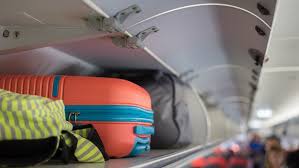
Hand Luggage Size and Weight
The following will provide guidance with regard to the rules of each airline and their permitted allowances for hand luggage size and weight. These can change on short notice, please always refer to the information provided when you book your fight.
CABIN BAG SIZES GUIDE
Note these may change, always check with the airlines terms and conditions, remember dimensions always include wheels and handles, unless expressly stated otherwise by the airline.
DUTY FREE ALLOWANCES FROM SPAIN TO UK
RYANAIR
Ryanair offers a number of different bag options to fit the needs of everyone.
All passenger fare types include a small personal bag, which must fit under the seat in front of you.
Bag measurements - 40cm x 25cm by 20cm or 25cm x 40cm x 20cm or 25cm x 40cm x 20cm
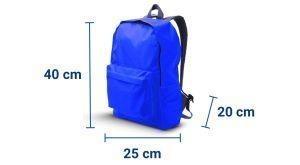
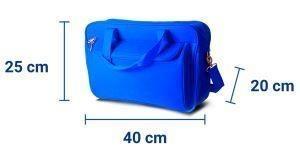

Need more room?
Priority & 2 Cabin Bags gives customers the benefit of boarding the plane via the Priority Queue and carrying their small personal bag (40x20x25cm) and 10kg wheelie bag (55x40x20cm) with them on board. This will mean you won't need to wait for your bag at the terminal at the destination. If Priority is sold out, you can purchase our 10kg Check-in Bag.
Planning to shop? Why not purchase the 10kg Check-in Bag?
The 10kg Check-in Bag offers a cheaper checked bag option, plus customers can also pack more liquids into a 10kg checked wheelie bag and walk to the boarding gate 'hands free.' Customers will check-in their 10kg wheelie bag at our bag drop desk prior to entering security.
20kg Check-in Bag!
The 20kg Check-in Bag provides you with extra room in your suitcase so you can pack all of your necessities and more!
Each passenger can purchase up to 3 checked bags of 20 kilos. Customers will check-in their 20kg Check-in bag at our bag drop desk prior to entering security.
On-board Medical Items
Passengers with medical equipment can still bring these items on board, free of charge, in addition to their small personal bag subject to pre-clearance by our Special Assistance team.
Travelling with a baby?
You can carry 2 items of baby equipment free of charge per child.
There is no cabin bag allowance for an infant (aged 8 days to 23 months). However, Ryanair allow a baby bag up to 5kg (dimensions: 45x35x20cms) for babies travelling on an adult's lap.
Over-sized Cabin Bags
Over-sized cabin baggage will be refused at the boarding gate, or where available, placed in the hold of the aircraft for a fee of €/£ 69.99 (fee subject to VAT on domestic flights at applicable government rates).
If you are unsure whether your bag is the correct size, check it at the Bag Drop desk before going through security.
Hand luggage size and weight
EASY JET
Everyone can bring one small cabin bag per person on board for free.
It can be a maximum size of 45 x 36 x 20 cm (including any handles or wheels) and needs to fit under the seat in front of you. That should be enough to bring all the essentials for your journey or for a short trip. Your bag can weigh up to 15kg, but we do ask that you’re able to lift and carry it yourself.
If you’d also like to bring a large cabin bag on board (max. 56 x 45 x 25 cm, including any handles or wheels), you have the option to:
- select an Up Front or Extra Legroom seat or
- NEW: book a large cabin bag for your flight
If you’re an easyJet Plus cardholder or customer who has booked a FLEXI fare, you can also bring a large cabin bag on board (in addition to your small cabin bag) as part of your membership or fare benefits. See below for full details.
Please note that the maximum number of cabin bags available per person is two; one small cabin bag for all customers and one large cabin bag for customers where it’s included with their seat, fare or membership benefits or where they have paid to add one to their booking.
Remember - purchasing all your bags online is cheaper and will help you avoid paying bag fees at the airport and your cabin bags being placed in the hold.
Your cabin bag allowance - All customers
|
Seat/bag booked |
Small under seat |
Large |
|
No seat selection |
||
|
Standard seat |
||
|
Up Front or Extra Legroom seat |
||
|
Large cabin bag added to your booking |
Hand luggage size and weight
TUI
Package Holidays
Hand luggage
You can take 1 piece of hand luggage per person (excluding infants) weighing up to 10kg and with maximum dimensions of 55x40x20cm on a TUI Airways flight. Things like laptops, handbags and items bought at the airport must fit within your 1 piece of hand luggage. You must be able to lift your hand luggage into the overhead storage compartments yourself. You can bring a Trunki case as hand luggage, as long as it weighs no more than 10kg.
Flights with other airlines - If you're flying with another airline, you'll find details of your hand luggage allowance on your e-ticket or confirmation email.
Flight Only Bookings - If you’re just booking a TUI Airways flight, you can carry 1 piece of hand luggage of up to 10kg for free. The maximum dimensions of your hand luggage can be 55x40x20cm and you must be able to lift your hand luggage into the overhead storage compartments yourself. Things like laptops, handbags and items bought at the airport must fit within your 1 piece of hand luggage.
Flying with infants - If you're flying with TUI Airways, you can take a pushchair for infants under 2 years old, for free. And if your flight is part of a package holiday, under-2s will also have a check-in luggage allowance of 10kg. If you’re not flying with TUI Airways, you’ll need to check with your airline. Most other airlines will also carry pushchairs free of charge and you can usually take them to the boarding gate. Some airlines also offer extra hold luggage for under 2s - you'll find details on your e-ticket or confirmation email.
JET2
On all Jet2.com flights, each passenger has a 10kg hand luggage allowance included as standard (excluding infants) and you can also bring a small, personal item onboard (such as a handbag or laptop bag) as long as it fits under the seat in front of you.
Travelling with little ones? You can bring along a collapsible pushchair, car seat and/or travel cot free of charge – up to a total weight of 10kg.
10kg included
You can take one piece of hand luggage onboard free of charge, as long as it weighs no more than 10kg and is no larger than 56cm x 45cm x 25cm (including wheels and handles).
Additional small bag
You can also bring a small, personal item on board (such as a handbag, laptop bag or airport purchase), as long as it is placed underneath the seat in front of you.
10kg infant allowance
For extra convenience when travelling with children, you can bring a collapsible pushchair/buggy, car seat and/or travel cot in the hold free of charge as long as the total weight of these items isn’t more than 10kg. Plus, you can take your pushchair all the way to the plane steps/airbridge before boarding!
VUELING
With Vueling you can always carry one under seat bag, free of charge (max. 40x20x30 cm). You can also take a cabin bag on board, depending on your fare and the option you choose.
Under seat bag
All customers can take an under seat bag on board, free of charge (max. 40x20x30 cm), as well as any purchases made at the airport.
The under seat bag and your shopping must all fit completely under the seat in front of you, and they must not be an obstacle or in the way.
Cabin bag
Our TimeFlex fare includes a second item of hand luggage on board (max. 10 kg and 55x40x20 cm). If you're travelling with our Basic, Optima or Family fare you can add it to your booking for a fee.
Irrespective of the fare chosen, Premium customers, passengers with special needs who have requested the airport assistance service, and anyone travelling with a baby may also take an item of hand luggage on board, at no extra cost, in addition to an underseat bag.
Passengers who do not have the 2 pieces in cabin service included in their fare or who do not book it separately will not be able to carry their cabin bag on board or check it in free of charge.
Does your fare only include an underseat bag on board?
If you're travelling with our Basic, Optima or Family fare you can add a second item of hand luggage to your booking (subject to availability of space on board). This service is also included with the Space One and Space Plus seats, which include priority boarding as well.
Things you need to know
If your fare includes an under seat bag only and you carry a second piece of hand luggage that you have not booked, it will be checked in and you will be charged a fee of EUR 30 at the check-in desk, or EUR 40 at the boarding gate, providing that the item does not exceed 10 kg and 55x40x20 cm.
If the under seat bag exceeds the permitted size (40x20x30 cm), it will be checked in and you will be charged a fee of EUR 30 at the check-in desk or EUR 40 at the boarding gate.
If any of the pieces of hand luggage exceeds the permitted size (10 kg and 55x40x20 cm), it will be checked in and you will be charged a fee from EUR 70 at the check-in desk or from EUR 80 at the boarding gate.
If you carry more than 2 pieces of hand luggage, each extra piece will be checked in and you will be charged a fee from EUR 70 at the check-in desk, or from EUR 80 at the boarding gate.
Did you book before 4 November 2022?
Our Optima, Family and TimeFlex fares include a cabin bag on board (max. 10 kg and 55x40x20 cm). If the bag exceeds the maximum weight or size, it will be placed in the hold for a fee of up to EUR 59. You can also take small bag on board (max. 40x20x30 cm), which must fit under the seat in front of you. If you're travelling with our Basic fare and haven't added a cabin bag to your booking, you can only take an under seat bag on board (max. 40x20x30 cm).
If you booked your flight before 23rd November 2021 and are travelling with our Basic fare, please bear in mind that if you don't have a connecting flight or haven't added a cabin bag to your booking, you must drop off your hand luggage at the check-in desk, at no extra cost (max. 10 kg and 55x40x20 cm). You can only take an underseat bag on board (max. 40x20x30 cm). If you go to the boarding gate with a cabin bag, it will be placed in the hold and you will be charged a fee of EUR 25 (this fee does not apply to bookings made before 10 November 2020).
BLUE AIR
one FREE piece of carry-on baggage which must meet the following expectations:
Maximum weight: 10 kg
Dimensions: 55 cm x 40 cm x 20 cm. It is important that you do not leave home without measuring and weighing your luggage, because, doing so, you make sure that your baggage will fit in the cabin storage area
NORWEGIAN AIR
One carry-on bag included
You can always bring one carry-on bag in the cabin free of charge.
You can also bring one small personal item on board. This could be a little handbag or a slim laptop case that fits comfortably under the seat in front of you.
Your ticket type will determine how heavy your hand baggage can be.
Size and weight limits
LowFare, Lowfare+, Premium
1 carry-on bag: max. 55x40x23 cm
1 small personal item: max. 25x33x20 cm
Max. combined weight: 10 kg
Flex, PremiumFlex
1 carry-on bag: max. 55x40x23 cm
1 small personal item: max. 25x33x20 cm
Max. combined weight: 15 kg
Hand luggage size and weight
FLYBE AIRLINES
Your cabin baggage allowance consists of the bags that you are able to bring into the cabin of the aircraft. Your ticket includes a complimentary cabin baggage allowance and you will not be charged for your cabin bag providing you respect the dimensions and weight allowance of our cabin baggage policy. Please note that your cabin bag may be subject to random compliance checks.
Your cabin baggage allowance is:
One standard cabin bag measuring no more than 55 x 35 x 20 cm including wheels and handles
One small personal item such as a handbag or laptop bag/briefcase that is smaller than your cabin bag and can fit under the seat in front of you
Combined weight of 10 kg for both items
1 larger item of hand luggage, 55 x 35 x 25 cm (21.5 x 13.5 x 10 in), plus 1 smaller item no larger than 40 x 30 x 15 cm (16 x 12 x 6 in). 12 kg (26 lbs) is the total allowable weight for the two items
Hand luggage size and weight
CARRY-ON BAG
Allowance: Onboard, MAX 10 KG - *Must fit under seat in front of you; can be a laptop bag, woman’s purse or small backpack
Wheels: Allowed/Not mandatory 40 x 30 x 20 cm* FOR FREE
TROLLEY BAG
Allowance: Onboard MAX 10 KG - *Must fit in the overhead compartment
Wheels: Allowed/Not mandatory 55 x 40 x 23 cm* FOR PURCHASE WITH WIZZ PRIORITY
CHECKED-IN BAG
Allowance: Checked MAX. 10KG, 20KG OR 32KG - *Up to 6 checked bags/passenger
Wheels: Allowed/Not mandatory
149 x 119 x 171 cm* FOR PURCHASE
For regulations as to what you can take in your hand luggage click HERE

Alicante airport Lost and Found - How to report lost items at Alicante Airport and what to do if your luggage does not arrive is damaged or stolen.
Alicante Airport Lost and Found Department - Please be aware the lost and found office is only dealing with items you lost at the airport building itself, it is NOT dealing with any items you lost on the plane. It is also NOT dealing with any delayed or lost luggage from a flight (see below).
Tips -Tie a brightly coloured scarf, tie, or another piece of material to the handle.
When it comes to luggage, there are tons of people out there that have the same bags. There are things that you can do to make your suitcase look more identifiable so it’s easier for you to spot. Even then, it’s best to get out your phone and take a quick picture of it before you check it.
Lost Bags or Belongings at Alicante Airport
If for some reason you did not see your bag or it was left on the baggage carousel, it will be taken to Alicante Airport Lost Luggage Office which is situated in the Arrivals Hall, personal belongings lost/left at the airport will also be taken here.
Lost Property Office opening times:
Monday to Friday (excluding public holidays) from 08.30 to 14.00
Contact:
E-mail:
Telephone: + 34 966 919 444
If you have lost any personal objects at the airport, please follow the next instructions:
- Fill in a lost property claim form, which you can download on the AENA lost property page
- When filling in the form, provide a detailed description of the lost item and attach a photograph, if possible.
- Email the form to
This email address is being protected from spambots. You need JavaScript enabled to view it. . - If the object is found or handed in, you will be contacted by the lost property office and given a reference number.
- You can pick up any lost and found property at the Alicante Airport Lost Property Office. You will need to provide your reference number and proof of identity.
Found property service is free of charge and therefore items cannot be shipped. If you are not able to come to the airport, contact a courier service that could deliver your object to you.
- If you are unable to pick up your items from Alicante Airport, you have the option of getting them sent to you for a fee via a company called Grupo 21. Please see here for more information about the Grupo 21 service.
If you left or forgot anything on board a plane, your only contact is the airline itself. In this case, walk up to the departure level of Alicante airport, where you will find desks or representatives of all air lines. See information below.
Luggage that is Lost or Delayed by your Airline
If you are sure your luggage has not arrived on the carousel, go to the lost luggage office in the baggage reclaim area at Alicante Airport. They will be able to tell you where your luggage is and when you can expect it to arrive. A member of staff will ask for your telephone number and the address of where you will be staying. Your luggage will then be delivered to you by courier free of charge once it arrives in Alicante.
If your luggage cannot be found in the airline’s system, it is probably because the barcode on the destination tag has either come off or been removed. In this instance, your luggage is most likely still at the departure airport. To help it be located, you will have to describe the bags to the member of staff. this is why it is a good idea to put your name and the address of where you will be staying on the luggage, and something on your bags to make them identified from others, such as a colourful strap.
Items lost on the plane
If you think that you have left any bags or lost any personal belongings on the aircraft and notice this quickly contact your airline directly.
Companies that handle lost luggage at Alicante Airport
Swissport Handling SA
Tel- +34 654 271 507
Location: Baggage reclaim area, level 0 + Check-in level 2
Swissport handles baggage for the following airlines: JetXtra, SAS, Thomas Cook Belgium, Thomas Cook UK, Transavia.com, Volotea, Wizz Air.
Iberia Airport Services
Tel- +34 966 919 013
Location: Baggage reclaim area, level 0
Iberia handles luggage for the following - Aeroflot, Air Algérie, Air Nostrum, Holidays Czech Airlines, Iberia Express, Jetairfly, Orbest, S7 Airlines, Thomson Airways, Transaero, VIM Airlines, Vueling.
Menzies Aviation
Tel- +34 966 919 060
Location: Baggage reclaim area, level 0
Menzies handles baggage for the following airlines: - Aer Lingus, Air Europa, EasyJet, Edelweiss Air, Flybe, Norwegian
Jet2.com
Tel- +34 966 919 386
Location: Baggage reclaim area, level 0
Azul Handling
Tel- +34 966 919 077
Location: Baggage reclaim area, level 0 + check-in level 2
Azul handles the following airlines: - Ryanair
Damaged Luggage
Once you have collected your bags off the carousel, check them immediately for damage or other signs of tampering or mishandling. Report any damage before leaving the airport; airline customer service agents will need to inspect the bag - airlines won’t cover normal wear and tear.
Stolen Luggage
Go to the baggage carousel when you get off your flight to minimize the potential time for your bag to be stolen. Most airlines scan luggage when they are loaded into the baggage claim area and records are kept especially at very busy airports. If your bag goes missing after you’ve left the baggage claim area, your claim is no longer with the airline, but with the police. Your travel insurance or homeowner’s insurance may cover a stolen suitcase; (check the small print).
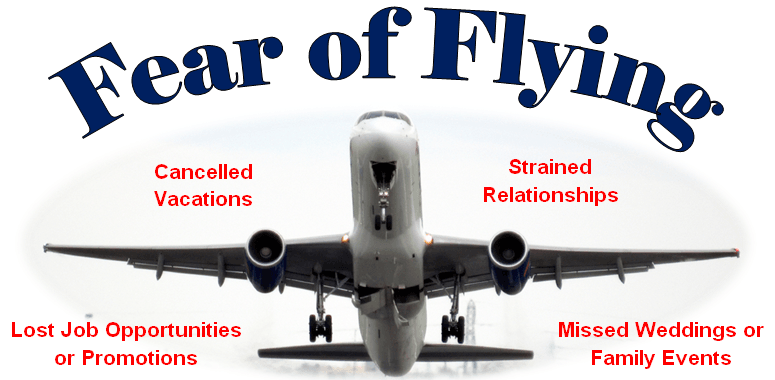
How to - Overcome your fear of flying
How to - Overcome your fear of flying. Research shows around 25 per cent of people have a fear of flying, while for 10 per cent that fear is a phobia, known as aviophobia, or aerophobia.
According to figures, air travel is safer than it has ever been.
Fear of flying can range from mild anxiety to downright debilitating, forcing you to forgo otherwise exciting plans to see the world.
Here are some top tips to help you overcome your fears and help you enjoy your flight and your holiday, without worrying about the return flight.
Locate your fear.
Do you fear a loss of control? Is it a fear of death? Is it claustrophobia? Different triggers require different things to help soothe them. If facts about aviation safety will make you feel better, read up on those before boarding. If claustrophobia is a trigger, talk to your airline about boarding early or getting an aisle seat.
Think about the situation logically, we know this can be hard.
Even though your emotions might feel powerful, take a step back and look at the big picture. Airplanes are a very safe mode of transportation. You have a much higher chance of getting injured or killed driving on the motorway (or even sitting in your own home) than flying in an airplane. Lots of people are scared to fly, but the fact is, the chances of anything going wrong in an aircraft are virtually zero. If you don’t believe it, do some research yourself and find out!
Overcome your Fear of flying
Choose your seat, but don’t panic if you can’t.
It is true that turbulence is usually greater at the back of the plane, so ask for a seat as close to the front of the plane as you can. However, if you haven’t been able to reserve a front of flight seat, don’t worry – simply remind yourself if you do hit turbulence that your seat means you feel the effects a little more and breathe slowly and deeply to try and steady your nerves.
Coping with turbulence, remember it’s ‘just a road in the air’
A bumpy flight is a tricky experience for a nervous flyer and adds to the level of worry before the next flight. But once you understand what causes it, you’ll understand that turbulence is a normal part of flying and not something to fear.
When a plane flies through an area of low pressure to high pressure (or vice versa), it causes a “bump” in the ride. These bumps aren’t dangerous, but pilots intentionally navigate away from strong turbulence to ensure the smoothest possible ride and the least anxiety for passengers. Another fact to keep in mind: Modern planes are designed to handle much more intensive turbulence than they would ever encounter.
Finally, a mantra that many nervous flyers repeat to themselves, ‘it’s just a road in the air’. Just like on a car or train journey, bumps and jostles are nothing to fear. When the seat belt light goes on don´t panic, this is just because the pilot does not want you to fall on the guy next to you, not because there is any type of flight risk.’
Remember that turbulence is uncomfortable but is not dangerous. It is a perfectly normal part of flying caused by nature.
Tip - Most turbulence tends to occur in the afternoon, so booking a flight in the early morning could mean a smoother ride. It won’t eliminate the chance of it happening totally, but it will lessen the odds
Preparation is key.
Each fearful flyer has their own set of tools to get through a flight. Some sit by the window and stare at the ground until the plane lands, others like to distract themselves with films, music and games. Whatever your tools, make sure you have everything prepared in advance. Fill up your iPad with TV shows you want to watch (though avoid thrillers and stress inducing shows like Breaking Bad or Homeland).
Cram your bag with fun things to distract yourself, crosswords, great books and a head pillow and eye mask.
And try to remove any stress triggers from the process of flying. So that means leaving plenty of time to get to the airport, keeping papers and passport easily accessible for check in, removing bottles of liquid from your bag and allowing yourself time to relax (or treat yourself) at the airport.
Distract yourself.
Chatting to a neighbouring passenger is a good way to distract yourself from obsessing over unusual noises
Michael Salem, author of the book Brave Flyer: How to End Your Fear of Flying, says ‘Many fearful flyers become hyper listeners during the flight, because their brain is programmed to believe there will be some sort of life-threatening problem and will try to prove it by listening for the faintest of sounds.
The best solution for this problem is to use sound cancelling headphones.
So, if possible, while in flight, distract yourself from imagining worst-case scenarios and listening out for every suspicious noise by chatting to your neighbour or listening to calming music or a meditation app such as Calm (be sure to ensure it is accessible in ‘Flight’ mode).
Sometimes just the noise of the engines is enough to stir someone up. Bring an mp3 player or iPod with quiet, calming music or nature sounds; you can get many free apps for iPods for this.
Close your eyes, pull up your blanket, and try this easy technique:
Hold your body still and breathe deeply. Listen closely to the nature sounds that you have on. Release (relax) your muscles and imagine you are wherever your sounds are (maybe on the beach or in a rainforest). Concentrate as much as possible on this. It might be a little hard at first but whenever an outside thought pops into your mind, push it out and keep focused that peaceful place in your mind.
Allow yourself a drink, in moderation.
Mixing alcohol and calming medication is NEVER a good idea
If a glass of wine helps calm your nerves, then there is no evidence to say you should avoid alcohol but remember that excessive drinking, or combining alcohol with any medication, may make you jittery, dehydrated and anxious. Limit yourself to two drinks, tops, and avoid mixing drink and any prescription pills, remember that alcohol has a much greater effect up in the air and too much will make you feel worse.
Stay hydrated
Before and during the flight, it's important to keep blood sugar levels up. Stick to water and juices to keep hydrated and remember to eat little and often to maintain your energy, which can help control anxiety levels. Rest if you can, though sleep is not essential.
Avoid caffeine
Nervous flyers should try to avoid coffee and chocolate before a flight, no matter how early it is! Caffeine can cause nervousness, palpitations and anxiety – none of which are conducive to a calm flight.
Make yourself as comfortable in your seat as possible.
It's hard not to feel stressed when you're too cold or sore from the hard seat.
Be sure to bring along a small throw blanket, a pillow, a shawl, slippers, a sweatshirt or whatever will make you comfy while traveling.
Close your window cover or ask your neighbour to if you don't like heights.
Wear a hat. It is scientifically proven that the simple act of wearing a cozy hat can relieve mental insecurity and make you feel more at ease.
Bring something that makes you happy or comforts you. This might include a favourite small plush animal or maybe some kind of comfort food to indulge yourself in.
If you suffer from a bad neck or shoulder problems consider wearing a soft neck collar as this will help alleviate any pressure, especially on long flights
Relieve your stress with simple exercises
if you feel that your emotions are just too out of control or that you can’t concentrate on anything else.
Bring along a small squeeze ball or stuffed animal to discretely squeeze as hard as you can. Just keep squeezing and squeezing and eventually you will have released a good deal of energy. This will help alleviate tension.
Overcome your Fear of flying
You can also try this: Starting with your feet, and moving up your whole body, tense and squeeze all the muscles in your body as hard as possible. Hold this as long as you can and then gently and slowly, from head to toe, release all you tension and completely relax every muscle in your body. Take a few slow sips of water, take a few deep breaths and repeat if necessary. This should help. Basically, when you feel that you can’t control your anxiety, do some simple in seat exercises that will drain excess energy.

When to seek Medical Advice
If your fear begins to take a hold of your life in a way that feels unmanageable, it’s important to reach out to a medical professional. Professionals will be able to help you identify what’s causing your flight fear and find effective ways to manage it. They can help you find treatment to restore your mental and physical well-being.
Treatment for fear of flying usually involves either medications or therapy. Doctors may suggest antianxiety medication. There are generally two types: one you take only when you encounter triggers for your stress, and another that you take on a regular basis.
Doctors may also suggest psychotherapy, including:
- exposure therapy
- hypnosis
- talk therapy
Relaxation and breathing exercises may also help.
If the phobia is simply too much there are other options - Train from London to Benidorm, Drive France to Costa Blanca, Drive from Bilbao or Santander to Benidorm
Like/follow Benidorm Seriously on Facebook for daily news and information
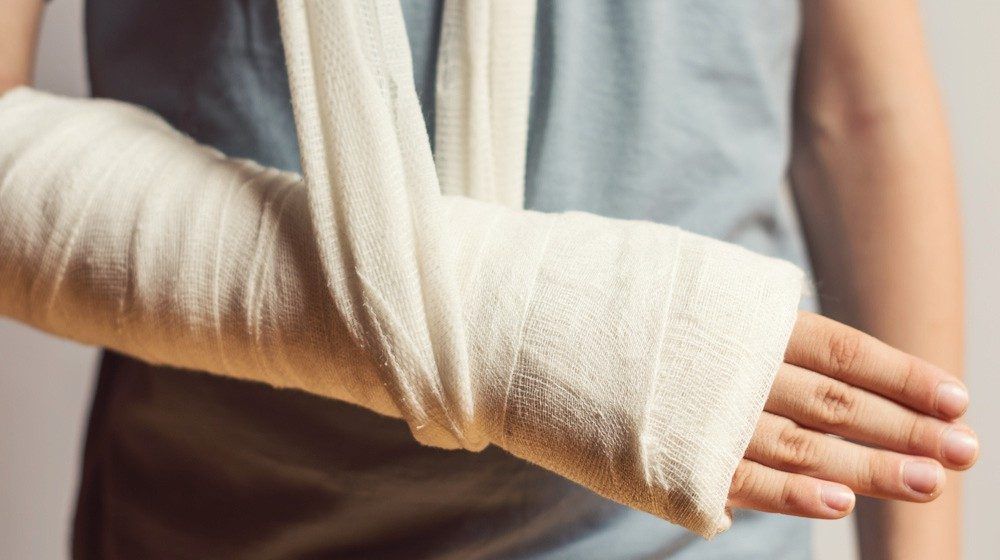
Flying with a plaster cast
When flying with a plaster cast, it's best to check with your travel operator or airline. Some airlines require you to wait 24 hours after a plaster cast has been fitted for flights less than 2 hours, and 48 hours for longer flights. This is because there's a risk of swelling after a plaster cast is first fitted, which can affect your circulation. If you're planning to fly with a newly fitted plaster cast, you may need to have it split. This is done to prevent swelling and reduce the risk of deep vein thrombosis (DVT) and compartment syndrome, a potentially serious condition caused by swelling. Make sure you tell the healthcare team treating you if you're going to be flying soon. You may need to have your cast replaced when you reach your destination and split again before you fly home. If both your legs are in plaster, it's unlikely that you'll be able to fly. Contact your travel operator or airline for advice.
Your seat on the plane
If you have an upper body cast or your leg is in a plaster cast below your knee and you can bend your knee, you'll be able to sit in a normal seat. If your plaster cast covers your knee, you won't be able to bend it, so you'll need to make special seating arrangements with your airline. Many airlines will require you to purchase additional seats in these circumstances. You won't be able to sit by one of the emergency exits, where the seats have more leg room, unless you're able to move easily in an emergency.
Flying with a plaster cast - Wheelchair help
If you have a cast on your leg and need a wheelchair to get around the airport and board the plane, tell your airline as soon as possible. They can arrange for a wheelchair to meet you at both ends of your journey. There's usually no additional charge for this service.
Using crutches. If you're using crutches to support your weight, you need to tell your airline. Most airlines will let you take your crutches on the plane, but they'll need to be stored in the hold during the flight.
Aer Lingus
Due to the risk of Deep Vein Thrombosis, all broken lower limbs need medical clearance. Please contact the special assistance department for medical clearance at least 48 hours in advance of your flight
No medical clearance is required for broken upper limbs; you may book online as normal.
British Airways
British Airways allows you to travel 24 hours after your plaster cast has been fitted for flights that are less than 2 hours. If your flight is longer, they require 48 hours.
Flying with a plaster cast with - Easy Jet
Passengers travelling with upper limbs in a cast(s) (ie waist and above), will only require one seat to travel.
Adult passengers travelling with lower limbs in a cast(s) (ie waist and/or full leg plaster), must purchase two or more seats in total, per Flight, to travel as required to accommodate their height comfortably. This will enable the limbs to be elevated during the Flight and reduce swelling.
Passengers travelling with a lower leg in plaster, may only require one seat. The number of seats required should be determined so as to accommodate the Passenger’s height comfortably.
Where additional seating must be purchased to accommodate Your needs, this will be required regardless of whether the aircraft is full or not. If the Flight is full, You will be required to transfer to the next available Flight on which You can purchase an additional seat. In these circumstances, easyJet will not be responsible for any resulting costs of an overnight stay.
The same requirements in relation to additional seating being booked shall apply to child passengers travelling with lower limbs in a cast(s) but the length of the cast will determine whether the child will require one, two or three seats to enable their leg to be elevated during the Flight. Passengers travelling with a plaster cast that has been fitted for less than 48 hours must ensure that the cast is split along the entire length of the cast to protect against swelling that may occur in-flight. If the plaster cast has been fitted for more than 48 hours, there is no requirement for the cast to be split. This is applicable for both plaster of paris and resin casts.
Emirates
If you have a leg cast you will need a medical certificate. This airline allows you to travel 48 hours after your plaster cast has been fitted. Plasters should be split for fresh injuries (48 hours or less). With Emirates is not possible to have extra space for your leg in the economy class. However, you can book an aisle seat.
Jet2
We strongly recommend that before travelling you contact your insurance company in the first instance.
If your plaster cast has been fitted for more than 48 hours at the time of travel and there are no complications, then there are no restrictions on travel. Your plaster cast should be loosely fitted to allow for expansion and swelling at high altitudes.
If the plaster cast has been fitted within 48 hours of your flight, you will need a Fit to Fly certificate, signed and dated by a medical professional. You may then travel with a split cast providing you can exit the aircraft unaided, or have a companion to assist you, or have been pre-approved by the Special Assistance Team.
If the break has needed surgery or there have been additional complications, you will need a Medical Information Form from the Special Assistance Team.
In all cases, you need to be able to bend your knee so you can sit in the aircraft seat.
KLM
You need to inform the airline of your situation at least 48 hours before your flight. You should inform KLM about your plaster cast.
Ryanair
If you have a broken limb in a cast you should advise Ryanair of both your condition and assistance requirements (if applicable) either at the time of booking online or via our Special Assistance line preferably on the day of booking.
If you are traveling with upper limbs in cast, waist and above, you will only require one seat.
If you are travelling with a full leg in cast you must purchase *3 seats* in total, per journey, to travel. This will enable the leg to be elevated during the flight and reduce swelling.
If you are travelling with lower leg in plaster, below the knee only, you will only require one seat.
If a plaster cast has been fitted on any limb for less than 48 hours then the cast needs to be split (the split needs to run along the entire length of the cast)
If the plaster cast been fitted for more than 48 hours there is no requirement for the cast to be split. This is applicable for both plaster of paris and resin casts.
*3 seats* - To book 2 extra seats for a full leg cast - go online and select 3 seats:
- 1st seat should be booked in the actual passenger's name
- 2nd seat should be entered as LEGSEAT ONE as the Last Name and EXTRA as the First Name.
- 3rd seat should be entered as LEGSEAT TWO as the Last Name and EXTRA as the First Name
The name EXTRA LEGSEAT ONE and EXTRA LEGSEAT TWO will then be displayed on the online boarding passes.
Please note that all passengers purchasing extra seats can use online check-in. The passenger's travel document details must be entered for the extra seats when checking in online. Online check-in is available from 60 days prior up to 2 hours before the scheduled flight departure times. There is no cabin or checked baggage allowance associated with the purchase of extra seats. If you choose not to purchase an allocated seat online check-in will only be available from 7 days up to 2 hours prior to each scheduled flight departure. Free allocated seats will be available between 4 days and 2 hours before each booked flight as of 01st November 2016.
Customers who have booked an extra seat should contact the call centre to ensure that all the seats are located together.
Flying with a plaster cast with - TUI
All passengers who would like to travel by air with broken limbs that are in casts have to comply with the following periods before air travel:
• No flights are allowed within 24 hours after a fracture.
• Only flights with a flight time of less than 2 hours are allowed between 24 hours and 48 hours after a fracture.
The cast must be plastered within the first 7 days after a fracture.
We recommend even for fractures that are older than 7 days that the cast is plastered.
Passengers who are traveling with casts on extremities from the hip and upward only need one seat.
Passengers with a leg cast (thigh down to or including the ankle) must purchase
2 seats because the leg must be elevated during the flight and for safety reasons should not be stretched out in the aisle.
For children with leg casts, the number of additional seats to be booked depends on the size of the child.
All passengers with broken limbs set in plaster casts must provide a physician's certificate confirming that the passenger is allowed to fly. In addition, some airlines require that an indemnity form for sick passengers be signed in order to confirm that the respective passenger has been informed regarding the risks associated with transportation (swelling of limbs due to low air pressure, tissue damage, circulation problems, risk of thrombosis, etc.)
Flying with a plaster cast - Vueling/Iberia
Passengers with a leg in plaster may fly as long as they provide a medical certificate that proves that the plaster cast was applied more than 24 hours earlier and under the following conditions: If the Passenger is wearing a plaster cast below the knee, they must reserve two seats.
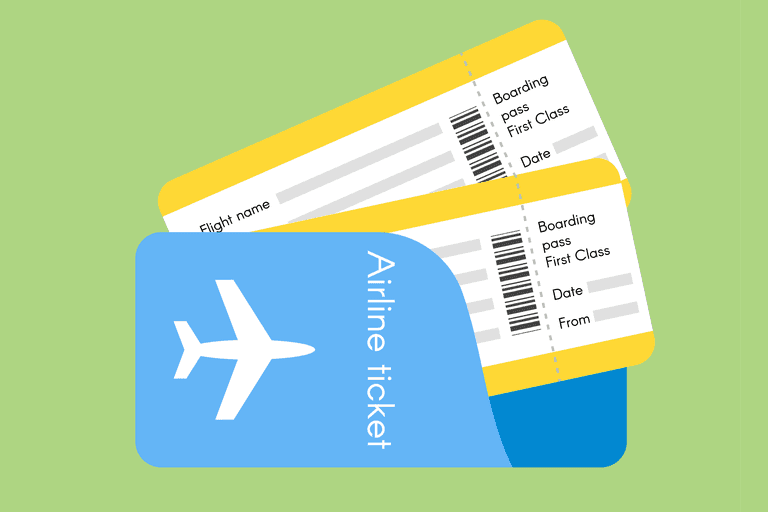
Flight Release Dates
Flight Release Dates - This page will help find the best times to look for your preferred airline by knowing when flight Tickets are released.
It's important to note there's no certainty about when's cheapest to book - prices can fall after tickets are released, especially if there's a sale. Your best bet to be sure to get a good price is to follow the tips in our Tips for getting cheap flights HERE
Alicante airport flight tracker HERE
Hand luggage restrictions HERE
Hand luggage size and weight HERE
Duty Free allowances from Spain to UK HERE
Fear of flying - Tips HERE
Dates by Airline
Air France
Tickets on sale 11 months before departure
American Airlines
Tickets on sale 11 months before departure
British Airways
Tickets on Sale 355 days before departure
EasyJet
Flights up to 30th November 2024 are currently available.
From 21st March, flights up to 2nd March 2025 will be available.
Emirates
330 days before departure via website (up to 337 days ahead via travel agents)
Jet 2
Tickets on sale 12 to 18 months before departure
Iberia/Vueling
Tickets on sale 360 days before departure
KLM
Tickets on sale 11 months before departure
Lufthansa
Tickets on sale 360 days before departure
Norwegian
Tickets on sale 9-12 months before departure
Qatar
Tickets on sale 361 days before departure
Ryanair
No set flight release dates but generally 5-6 months before departure
Virgin Atlantic
11 months before departure
For additional information on flight release dates join our Facebook Group
*Please note while every attempt is made to keep this information up to date the information can change without notice*.
Keep up to date with other travel news by checking out this section of the website.





